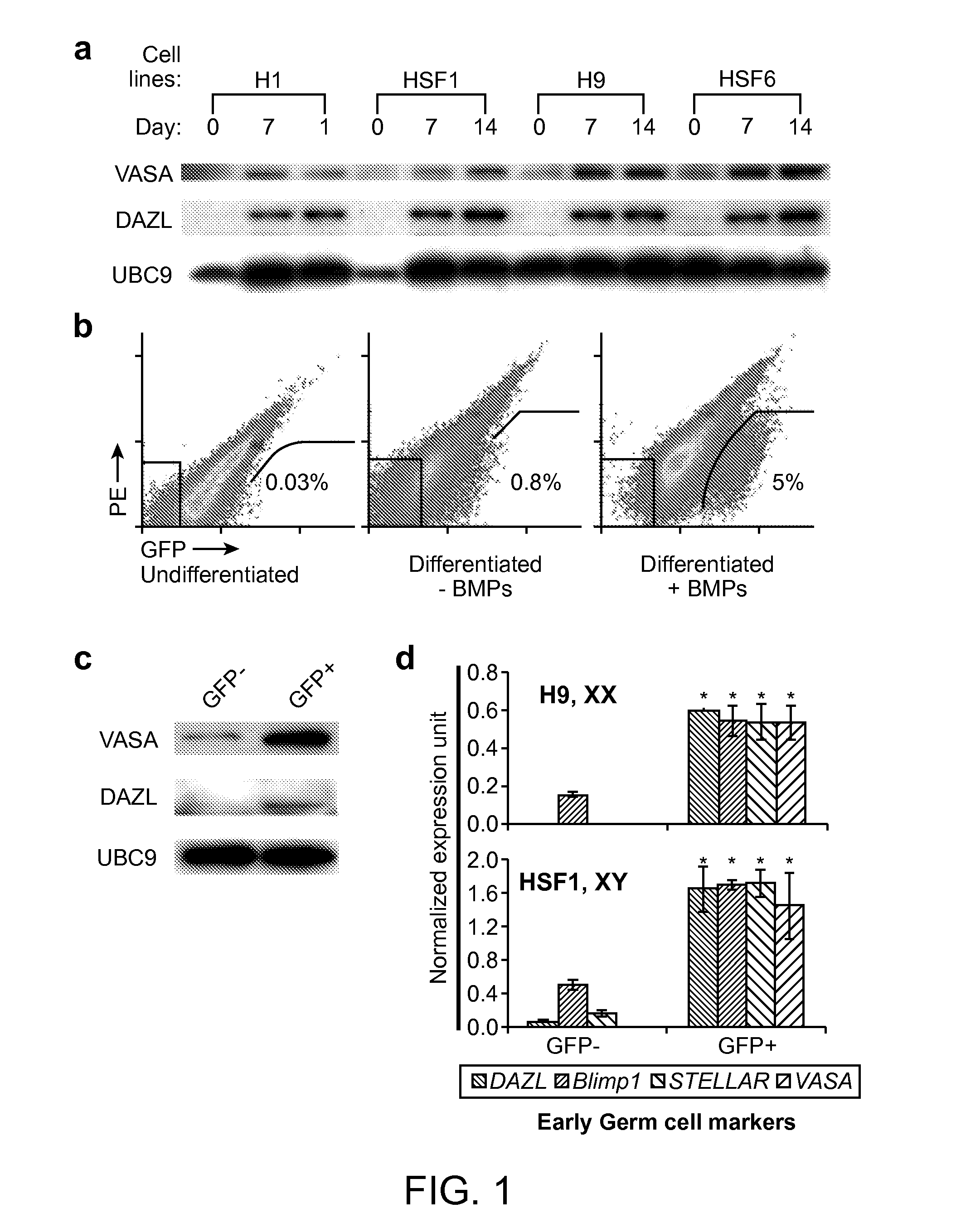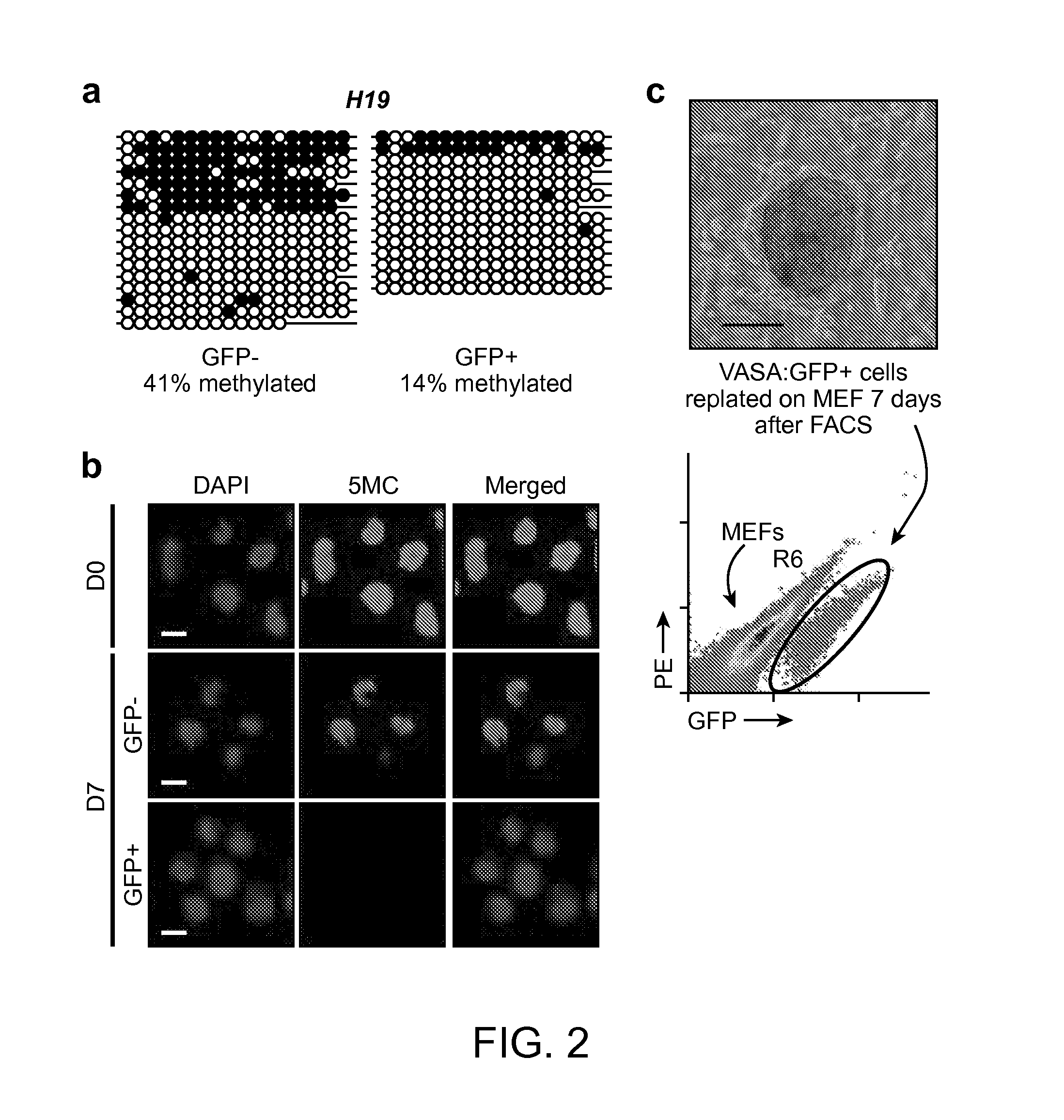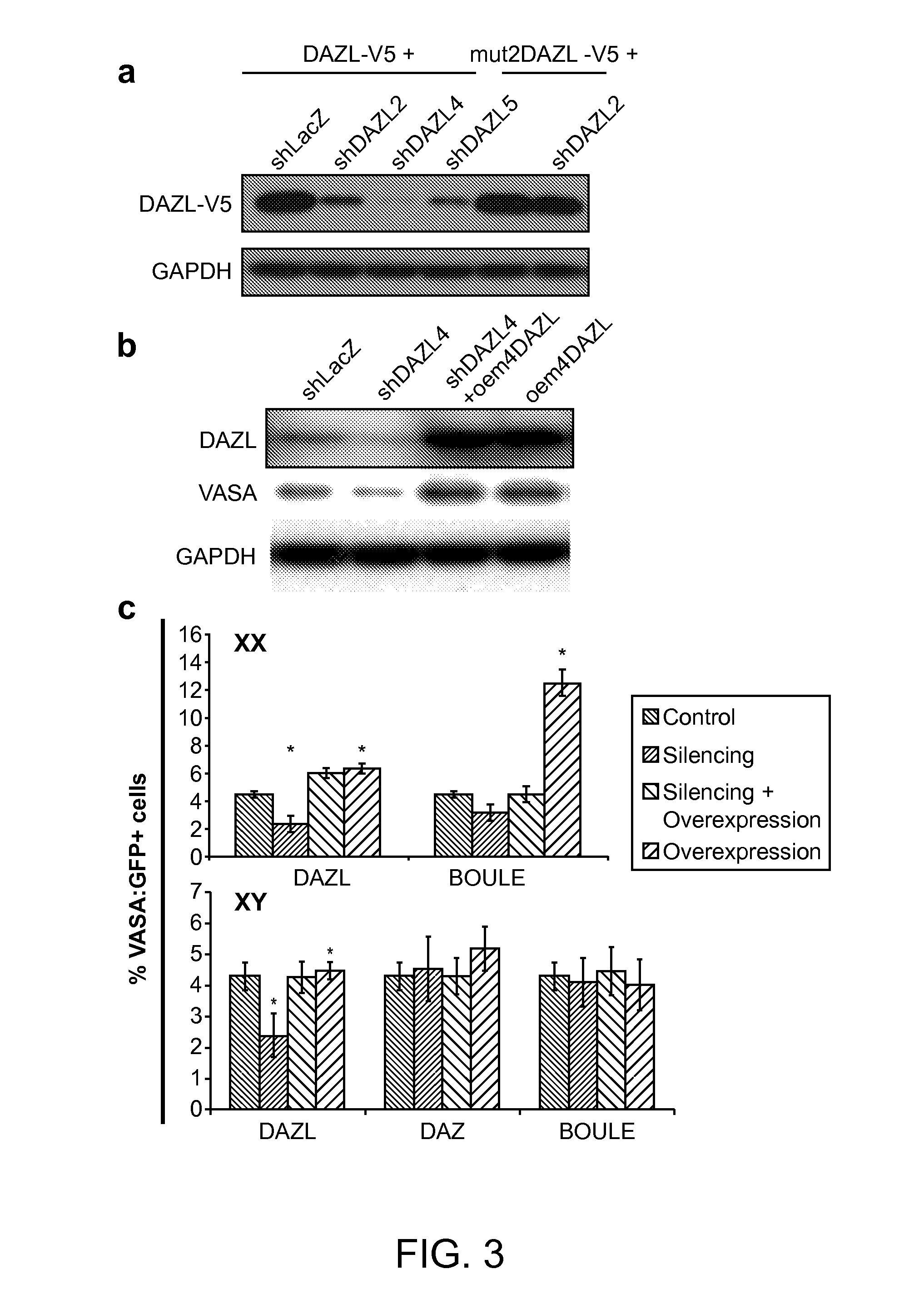Induction of Germ Cells from Pluripotent Cells
a technology of pluripotent cells and germ cells, which is applied in the field of pluripotent cell induction of germ cells, can solve the problems of ineffective treatment of infertility, few or no germ cells, etc., and achieve the effects of promoting germ cell differentiation, and increasing the differentiation of pluripotent cells
- Summary
- Abstract
- Description
- Claims
- Application Information
AI Technical Summary
Benefits of technology
Problems solved by technology
Method used
Image
Examples
example 1
Materials and Methods
[0120]VASA—GFP reporter, transduction and FACS. 2.5 kb of human VASA upstream of the first codon was cloned into pENTR 5′-TOPO. EGFP was fused 1 kb downstream of the last codon of human VASA, and cloned into pENTR / D-TOPO. Cloned plasmids were recombined (Suter, D. M. et al, (2006) Stem Cells 24, 615-623) to create pLVGV. Lentiviral supernatant was produced, human ES cells were transduced overnight on matrigel in conditioned medium and subsequently selected with geneticin (200 ng ml−1) for 7 days. Selected human ES cells were differentiated for the times indicated and harvested by brief treatment with collagenase IV and then TrypLEExpress (Invitrogen). The cell suspension was prepared in differentiation medium for FACS with a MoFlow or BD cell sorter.
[0121]Human ES cell lines and adherent differentiation. Four human ES cell lines were used in this study: HSF1(XY), HSF6(XX), H1(XY) and H9(XX). Undifferentiated cultures of human ES cells were maintained on irradiat...
example 2
Materials and Methods
[0146]Cell culture. Human ESCs H9 (XX) and HSF1 (XY), human fetal derived iPSC line iPS(IMR90) (XX) and human adult derived iPSC line iHUF4 (XY; lentiviral transfection with OCT3 / 4, SOX2, KLF4 and C-MYC) were used in the experiments. Human ES cells and iPS cells were maintained on irradiated mouse embryonic fibroblasts (MEFs) in KoDMEM culture medium for ES cells and DMEM / F12 for iPS cells supplemented with 20% KnockOut serum replacer, 2 mM L-glutamine, 0.1 mM nonessential amino acids, 10 ng / ml basic FGF (all from Invitrogen, Carlsbad, Calif.) and 0.1 mM 2-mercaptoethanol (Millipore, Billerrica, Mass.). Cells were passaged onto fresh MEFs every 3-5 days using 1 mg / ml Collagenase IV (Invitrogen). The feeder-free culture was maintained on matrigel (BD Biosciences, Bedford, Mass.) coated plates with culture medium conditioned on MEFs for 24 hours. Cells were differentiated on matrigel coated plates with differentiation medium, KoDMEM supplemented with 20% fetal bov...
example 3
[0161]Polycyclic aromatic hydrocarbons (PAHs) are one of the most common components of air pollution and are formed during the incomplete burning of organic substances (coal, oil, tobacco, meat); they enter the environment mainly as exhaust from automobiles, residential wood burning or forest fires, or secondhand cigarette smoke. Numerous studies have linked PAH exposure to tumorigenicity, reproductive failure, and differentiational birth defects in laboratory animals. Consistent with this, epidemiological studies have linked human PAH exposure to lowered reproductive capacity, pulmonary disease, tumorigenicity, birth defects and behavioral abnormalities. However, although animal and epidemiological studies indicate adverse outcomes in association with PAH exposure, tools to directly assay adverse outcomes of PAH exposure during differentiation of particular human cell lineages have not been available.
[0162]A series of studies in mice have demonstrated that oocytes and fetal germ ce...
PUM
| Property | Measurement | Unit |
|---|---|---|
| Fraction | aaaaa | aaaaa |
| Fraction | aaaaa | aaaaa |
| Fraction | aaaaa | aaaaa |
Abstract
Description
Claims
Application Information
 Login to View More
Login to View More - R&D
- Intellectual Property
- Life Sciences
- Materials
- Tech Scout
- Unparalleled Data Quality
- Higher Quality Content
- 60% Fewer Hallucinations
Browse by: Latest US Patents, China's latest patents, Technical Efficacy Thesaurus, Application Domain, Technology Topic, Popular Technical Reports.
© 2025 PatSnap. All rights reserved.Legal|Privacy policy|Modern Slavery Act Transparency Statement|Sitemap|About US| Contact US: help@patsnap.com



